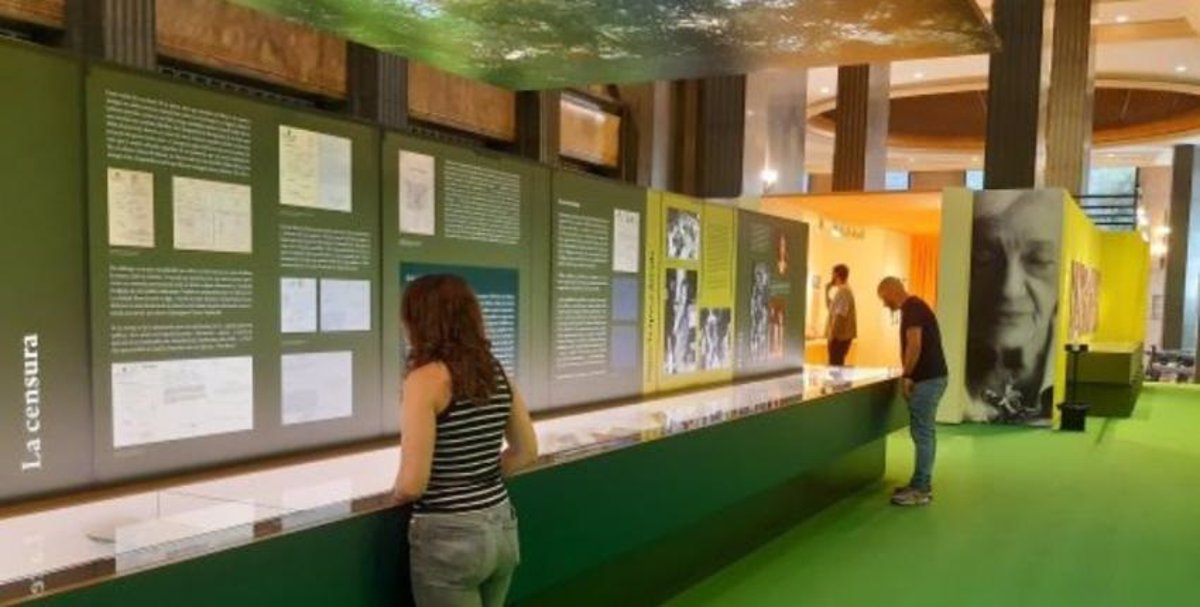Cervantes Institute today opened an exhibition in honor of the memory of Ana Maria Matute (Barcelona, 1925 – Barcelona, 2014) and in which his first works written in notebooks and illustrations unknown to the public are rescued, copies that spent a long time in silence due to censorship and the last word on the page of his typewriter: “Mada”, the nanny of his unfinished novel ‘Familiar Demons’.
This exhibition serves as a prelude to the events that will commemorate the centenary of his birth throughout 2025 and when ten years have passed since his death. Curated by the editor and philologist María Paz Ortuño Ortín, the title of the exhibition ‘Ana María Matute. He who does not invent does not live’ It refers to the defense of the invention of stories as a supreme value and way of being in the world that the author and academic always took pride in, according to Cervantes.
The exhibition also highlights the author’s stance against censorship and her struggle to escape the “pigeonholing” of children’s literature that she was once classified as a child’s literature critics. The director of the Cervantes Institute, Luis García Montero, has alluded to this idea that was circulating regarding Matute’s literature, recalling that she was the creator of “definitive books” such as ‘Los hijos muertos’.When we talk about children’s literature, we are faced with prejudices against an author who, despite betting on realism, was aware that she could not forget fantasy or reality as an invention.“, he said.
For García Montero, the writer’s appearance of “fragility and tenderness” could be “deceptive” since she was someone who “went through life very confident and firm, without being confused with arrogance and elitism.” The director of the institution also referred to that moment of censorship in Matute’s career that led to his book Luciérnagas remaining unpublished for several years.
The exhibition ‘Ana María Matute. He who does not invent does not live’ It offers an exhaustive overview of his life and work. The journey is divided chronologically into four stages, referring to his childhood, youth, maturity (which in turn reflects the terrible depression that he suffered during this period) and his rebirth.
CONTENT
Numerous photographs, personal objects, letters and drawings by the author will help to deepen knowledge of her and to discover unknown facets of her, such as that of a draftsman and painter, thanks, among other things, to the delightful paintings she made for Forgotten King Gudú (1996), her most beloved novel.
However, before these drawings, Matute, who even considered dedicating himself to painting professionally, had already decided to accompany his works with imagined portraits of some of his characters (which were never published together with the works). Another example of this passion for watercolours and brushes is his ‘Self-portrait’ made at the age of 14 and which is also included in this exhibition.
The visitor will also be able to appreciate originals such as the school notebook in which he handwrote ‘Little Theatre’a work that he presented at the age of 19 to the Destino publishing house and marked the beginning of his literary career. The exhibition also displays for reading a unpublished story from the collection of stories ‘The Silly Children’ (1956), ‘The Little Drowned Man’, which was not approved by censorship.
Getting closer to his creative process will also be possible thanks to the original pages of his works, which show the corrections and changes he continually made, and it will also be possible to hear his voice at different points scattered throughout the exhibition.
